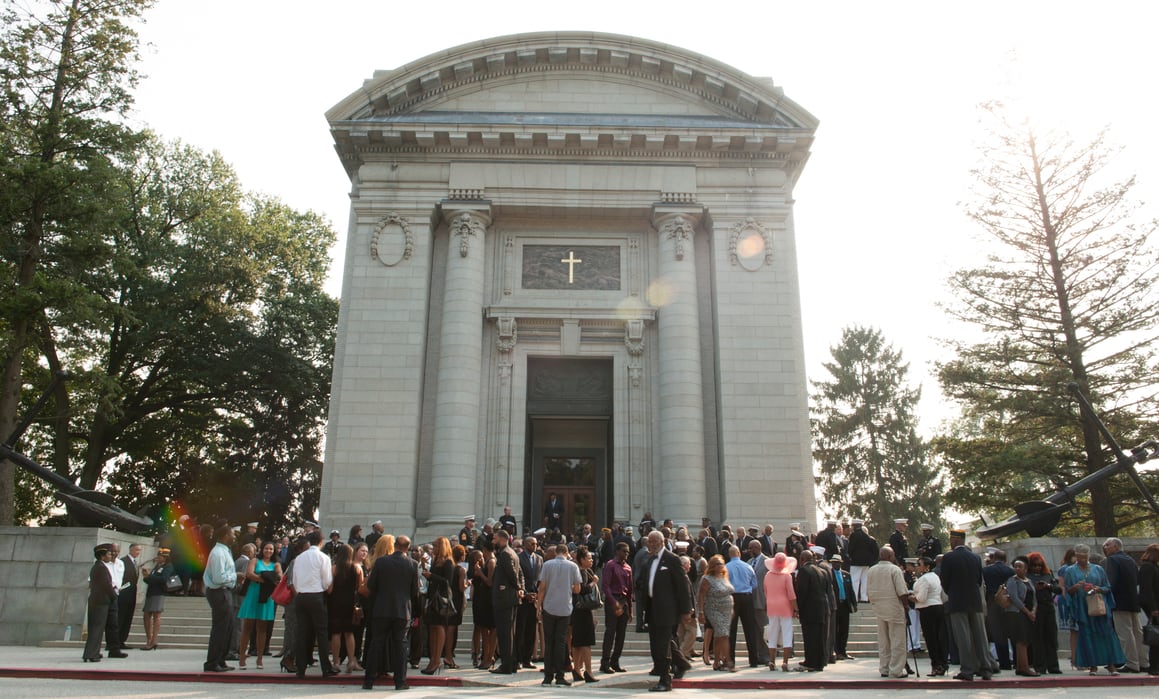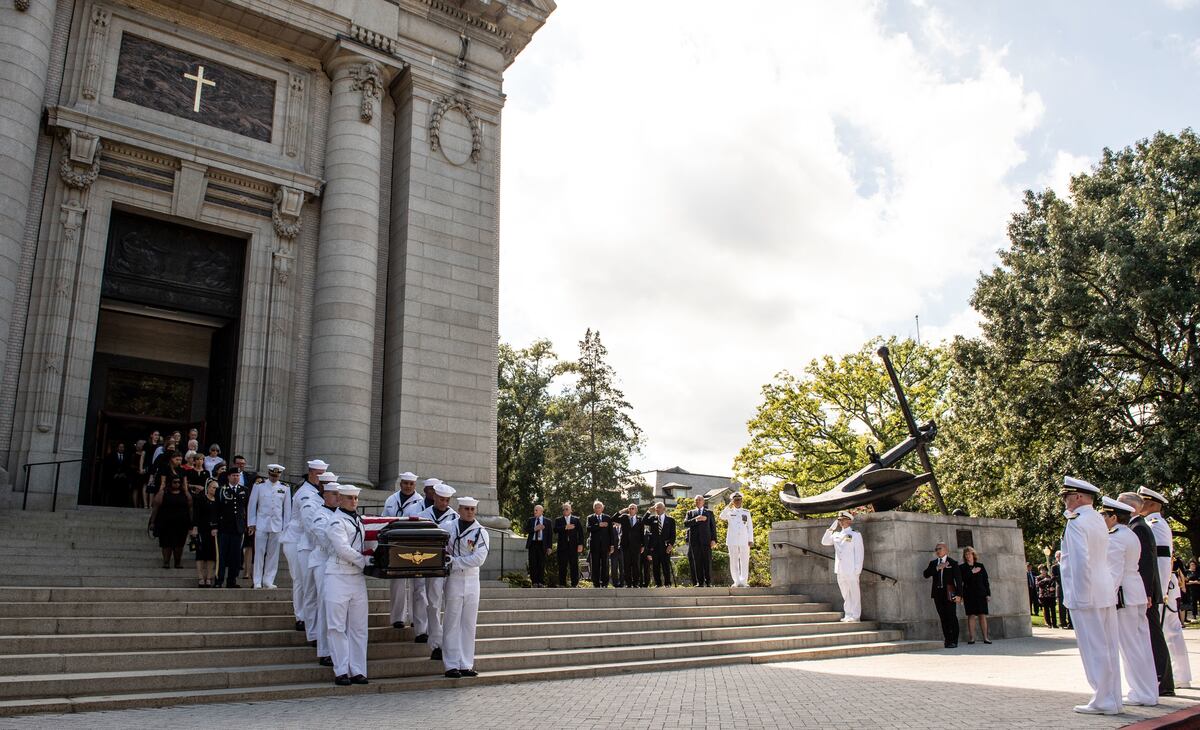ANNAPOLIS, Md. — The doors are 22 feet tall and about 8 feet wide. One bears life-like etchings of personified science contemplating tools of war. On another, a mother teaches her son how to fight.
A gift from the Class of 1868, the Naval Academy Chapel doors are bronze-cast monoliths, towering above midshipmen, newlyweds and tourists who pass through.
For its 50-year anniversary, the Class of 1968 funded restoration of the doors, linking their legacy to the midshipmen who graduated a century before them.
The Class of 1968 is one of the Naval Academy’s most famous; from their ranks emerged several chiefs of naval operation, a U.S. senator, an Emmy Award winner and, according to former class president Cmdr. Joseph Conway, a world boomerang champion. The class has been involved with a number of campus projects over the years, and for their 50th anniversary took the opportunity to link to their 1868 counterparts.
RELATED

The Gorham Manufacturing Co. cast and installed the doors in 1909 after relatively unknown sculptor Evelyn Beatrice Longman’s designs won a nationwide competition.
Longman included painstaking detail in her work — veins on the arms of the figures, anchors and seashells etched into the hems of their robes. But 109 years of public display comes with 109 years of weathering from forces natural and man-made, including previous botched restoration attempts.
Her dulled design needed rescuing.
"I always say every project is like a crime scene," said preservationist Alfonso Narvaez, "and I have to figure out who did what and when over history."
Narvaez worked alongside fellow preservationist Lane Burritt and patina specialist James Gwinner to investigate years of treatments. Since their original installation, the ornate bronze slabs have endured colored waxing, acid treatments and, more recently, an inexpensive black lacquer.
The durable paint was likely intended to defer regular maintenance but came at a cost. The coating was applied over layers of wax, so it never adhered properly. This lead to verdigris, or patination — a green oxidation occurring when bronze is exposed to air or water.
When they first approached the doors in September, the restoration team thought they'd be able to build up a stable, sustained patina over time, Burritt said. But their initial treatment wasn't working.
"To make it more difficult, we found very bizarre areas on the door during the mockup that we realized were probably treated with acid attempting to correct problems where they were attempting to get color and it wouldn't stay," she said. "The problem with acid is it's almost impossible to patinate unless you strip the door down all the way."
So, they did. With garnet grains smaller than the width of a hair, in a blaster with less pressure than a garden hose, the team gently abraded years of treatment from the doors to bring them back to their original bronze. They then treated it with a chemical darkener and applied wax to restore luster.

The Class of 1968 raised $1.8 million in total funds to donate this year; $157,000 went to refurbishing the doors. The restoration work cost $120,000 and the remaining $37,000 will go toward endowing future maintenance.
The choice to endow maintenance is highly unusual in the preservation world. Most donors supply money on a once-and-done basis, leaving the receiving organization to pay for upkeep. This can hamstring restoration efforts and force preservationists to choose cheap, durable treatments instead of using best practices, Burritt said.
"In this case, we can use best practices because they intend to do the right thing by the piece and therefore we can design the right treatment," she said. "Therefore, it's a very big deal that they have the foresight to think through the funding of maintenance."
Conway said his class hopes to sustain the funding through a partnership with the Class of 2018; the two are "linked" through the academy's Link in the Chain program.
“We’re going to approach them for their 10th reunion to take over the maintenance from us,” Conway said. “That’s, I think, a terrific way of sustaining the concept of the ... program and sustaining that relationship.”





